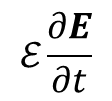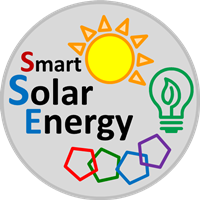TRS Project Workshop for Energy Storage 2017
Keynote Speech:
"From Maxwell’s displacement current to nanogenerator driven self-powered systems and blue energy"
Zhong Lin Wang
School of Materials Science and Engineering, Georgia Institute of Technology, Atlanta, Georgia USA
Beijing Institute of Nanoenergy and Nanosystems, Chinese Academy of Sciences, China.
Abstract:
Self-powered system is a system that can sustainably operate without an external power supply for sensing, detection, data processing and data transmission. Nanogenerators (NG) were first developed for self-powered systems based on piezoelectric effect and triboelectrification effect for converting tiny mechanical energy into electricity, which have applications in internet of things, environmental/infrastructural monitoring, medical science, environmental science and security. Here, we first present the fundamental theory of the NGs starting from the Maxwell equations. In the Maxwell’s displacement current, the term  gives the birth of electromagnetic wave, which is the foundation of wireless communication, radar and later the information technology. Our study indicates that, owing to the presence of surface polarization charges present on the surfaces of the dielectric media in NG, an additional term
gives the birth of electromagnetic wave, which is the foundation of wireless communication, radar and later the information technology. Our study indicates that, owing to the presence of surface polarization charges present on the surfaces of the dielectric media in NG, an additional term  should be added in the Maxwell’s displacement current, which is the output electric current of the NG. Therefore, our NGs are the applications of Maxwell’s displacement current in energy and sensors. NGs have three major application fields: micro/nano-power source, self-powered sensors and blue energy. We will present the applications of the NGs for harvesting all kind mechanical energy that is available but wasted in our daily life, such as human motion, walking, vibration, mechanical triggering, rotating tire, wind, flowing water and more. Then, we will illustrate the networks based on triboelectric NGs for harvesting ocean water wave energy, for exploring its possibility as a sustainable large-scale power supply. Lastly, we will show that NGs as self-powered sensors for actively detecting the static and dynamic processes arising from mechanical agitation using the voltage and current output signals.
should be added in the Maxwell’s displacement current, which is the output electric current of the NG. Therefore, our NGs are the applications of Maxwell’s displacement current in energy and sensors. NGs have three major application fields: micro/nano-power source, self-powered sensors and blue energy. We will present the applications of the NGs for harvesting all kind mechanical energy that is available but wasted in our daily life, such as human motion, walking, vibration, mechanical triggering, rotating tire, wind, flowing water and more. Then, we will illustrate the networks based on triboelectric NGs for harvesting ocean water wave energy, for exploring its possibility as a sustainable large-scale power supply. Lastly, we will show that NGs as self-powered sensors for actively detecting the static and dynamic processes arising from mechanical agitation using the voltage and current output signals.
[1] Z.L. Wang, Materials Today, 20 (2017) 74-82.
[2] “Nanogenerators for Self-Powered Devices and Systems”, by Z.L. Wang, published by Georgia Institute of Technology (first book for free online down load): http://smartech.gatech.edu/handle/1853/39262
[3] Z.L. Wang, L. Lin, J. Chen. S.M. Niu, Y.L. Zi “Triboelectric Nanogenerators”, Springer, 2016. http://www.springer.com/us/book/9783319400389
[4] Z.L. Wang “Triboelectric Nanogenerators as New Energy Technology for Self-Powered Systems and as Active Mechanical and Chemical Sensors”, ACS Nano 7 (2013) 9533-9557.
[5] Z.L. Wang, J. Chen, L. Lin “Progress in triboelectric nanogenertors as new energy technology and self-powered sensors”, Energy & Environmental Sci, 8 (2015) 2250-2282.
About speaker:
Dr. Zhong Lin (ZL) Wang received his PhD from the Physics Department of Arizona State University in 1987. He is the Hightower Chair in Materials Science and Engineering and Regents' Professor at Georgia Tech, and Founding Director and Chief Scientist at Beijing Institute of Nanoenergy and Nanosystems, Chinese Academy of Sciences. Dr. Wang has made original and innovative contributions to the synthesis, discovery, characterization and understanding of fundamental physical properties of oxide nanobelts and nanowires, as well as applications of nanowires in energy sciences, electronics, optoelectronics and biological science. His discovery and breakthroughs in developing nanogenerators establish the principle and technological road map for harvesting mechanical energy from environment and biological systems for powering a personal electronics. His research on self-powered nanosystems has inspired the worldwide effort in academia and industry for studying energy for micro-nano-systems, which is now a distinct disciplinary in energy research and future sensor networks. He coined and pioneered the field of piezotronics and piezo-phototronics by introducing piezoelectric potential gated charge transport process in fabricating new electronic and optoelectronic devices. This breakthrough by redesign CMOS transistor has important applications in smart MEMS/NEMS, nanorobotics, human-electronics interface and sensors. Dr. Wang was elected as a foreign member of the Chinese Academy of Sciences in 2009, member of European Academy of Sciences in 2002, fellow of American Physical Society in 2005, fellow of AAAS in 2006, fellow of Materials Research Society in 2008, fellow of Microscopy Society of America in 2010, fellow of Royal Society of Chemistry, and fellow of the World Innovation Foundation in 2002. He received 2016 Distinguished Scientist Award from (US) Southeastern Universities Research Association, 2015 Thomas Routers Citation Laureate award, 2014 World Technology Prize in Materials; 2014 the James C. McGroddy Prize for New Materials from America Physical Society, 2013 ACS Nano Lectureship award, 2012 Edward Orton Memorial Lecture Award and 2009 Purdy Award from American Ceramic Society, 2011 MRS Medal from the Materials Research Society, 1999 Burton Medal from Microscopy Society of America. He has authored and co-authored 6 scientific reference and textbooks and over 1200 peer reviewed journal articles (16 in Nature and Science, 25 in Nature and Science sister journals), edited and co-edited 14 volumes of books on nanotechnology, and held over 100 US and foreign patents. From SCI data base, his entire publications have been cited for over 110,000 times with an h-index of 163 [http://www.researcherid.com/rid/E-2176-2011]; Google scholar gives a citation of 150,000 with an h-index of 180 [http://scholar.google.com/citations?user=HeHFFW8AAAAJ&hl=en]. He has delivered over 900 plenary, keynote, invited and seminar talks at international and national conferences as well as universities and research institutes worldwide. Details can be found at: http://www.nanoscience.gatech.edu
Copyright © 2014 Faculty of Engineering, The Chinese University of Hong Kong. All rights reserved.

